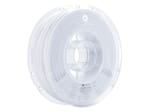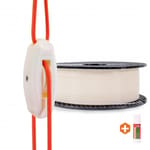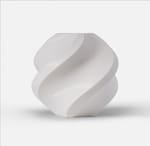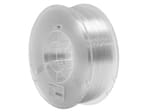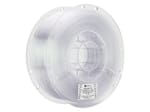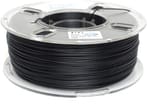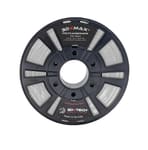Polycarbonate (PC) is a powerful material used across many industries. It stands out for three main features: optical clarity, resistance to heat, and incredible toughness. This makes it perfect for use in electronic cases, automobile parts, robot bumpers, and similar parts that require durability.
3D printing with variants of PC will typically get you a temperature resistance of just over 110 °C, yielding translucent, icy prints. Some brands offer a small range of different colors and blends, though variants are more limited than more aesthetically oriented materials like PLA.
Parts printed with PC filament will come out fabulously strong, but printing PC can be quite a challenge. While some general settings are outlined below, as with any filament, check the manufacturer’s recommended settings before printing.
After going over a few 3D printing tips, we’ll look into how we narrowed down our choices to make this list, and then we’ll look at our top picks of PC filaments.
Printing Tips
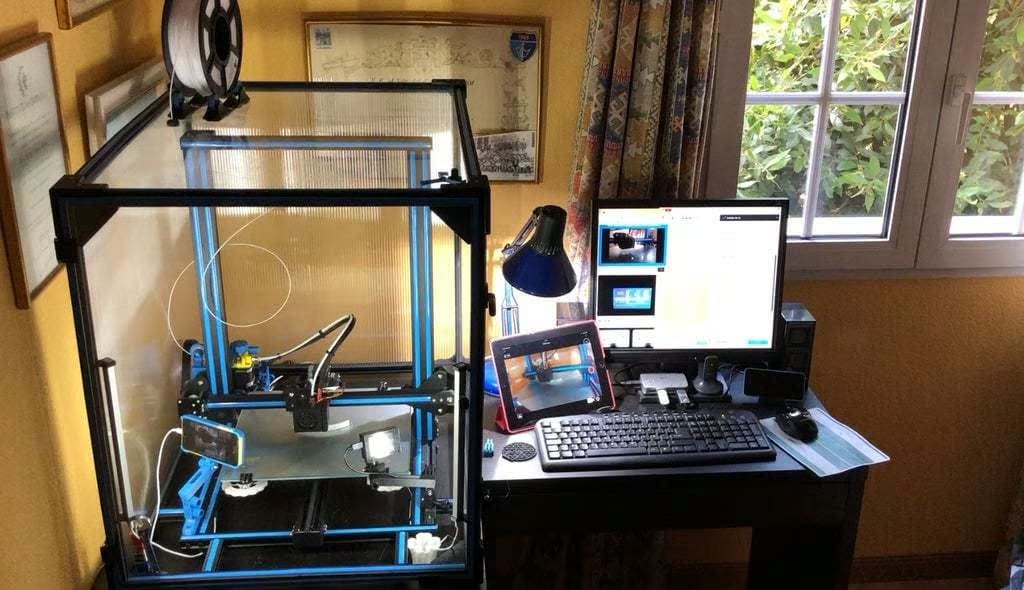
Polycarbonate is quite a tough material, both in terms of breaking as well as printing. It can be quite the step up from traditional hobby-grade materials but is a good entry point into engineering materials for the price. It provides a much-needed boost to dimensional stability, durability, and heat resistance that’s required for parts that will receive a lot of abuse. Here are some tips to help you in your PC printing journey:
- Nozzle temperature: PC filaments often require nozzle temperatures ranging from 250 °C to 310 °C. You’ll need to ensure that your printer is capable of safely reaching these temperatures before even considering the use of PC filament. An all-metal hot end will be required.
- Bed temperature: PC requires a heated bed to ensure good bed adhesion. Temperatures can range from 80 °C to 150 °C. Again, make sure your printer is capable of safely reaching these.
- Enclosure: Much like ABS, PC is a tricky filament to print with in an open-frame printer. The slightest breeze can cause the material to come loose from the print bed or result in poor layer adhesion. An enclosure is highly recommended when printing with PC to maintain a consistent ambient temperature. This will also contain the strong fumes emitted when printing this material.
- Print speed: Most PC blends will require that you slow down your print speeds to achieve optimal print quality. Most brands recommend a speed between 30 and 70 mm/s, though some blends have allowed makers to reach higher speeds.
- Storage: PC is an extremely hygroscopic material. It will quickly absorb moisture from the air and degrade if not handled properly. It’s recommended to keep your filament in a controlled, low-humidity environment. Airtight containers with desiccant packs can do the trick for short print jobs. When beginning a long print job, you may want to print directly from the container if possible.
- Drying: If you hear popping noises while printing, experience extreme stringing, or notice an overall degradation in print quality, it has most likely absorbed too much moisture. To remove the moisture, dry your filament using an oven, food dehydrator, or a commercial filament dryer, just like you would other filaments, such as ABS or nylon.
- Part cooling: Much like ABS, PC doesn’t like to be cooled while printing. You’ll need to turn off any part cooling fans when printing this material. Keep in mind that PC is a functional material and isn’t intended to have a high-quality surface finish.
- Bed adhesion: Another infamous challenge of PC is its poor bed adhesion. To combat this, you can always turn to the trusty glue stick or hairspray. You can also use more dedicated solutions like a PEI sheet, BuildTak, or Magigoo PC.
- Oozing: PC has a strong tendency to ooze while printing. It’s important to tune your retraction settings and minimize such distances to prevent jamming. If your hot end can’t reach the desired temperature, slowing down your print speed will allow the material more time to melt before being extruded.
As you can see, PC can be a tricky material to get right. Once you dial in all of your settings, however, it can be quite a rewarding material to work with, giving you access to durable parts that lower-end materials simply can’t create.
Considerations
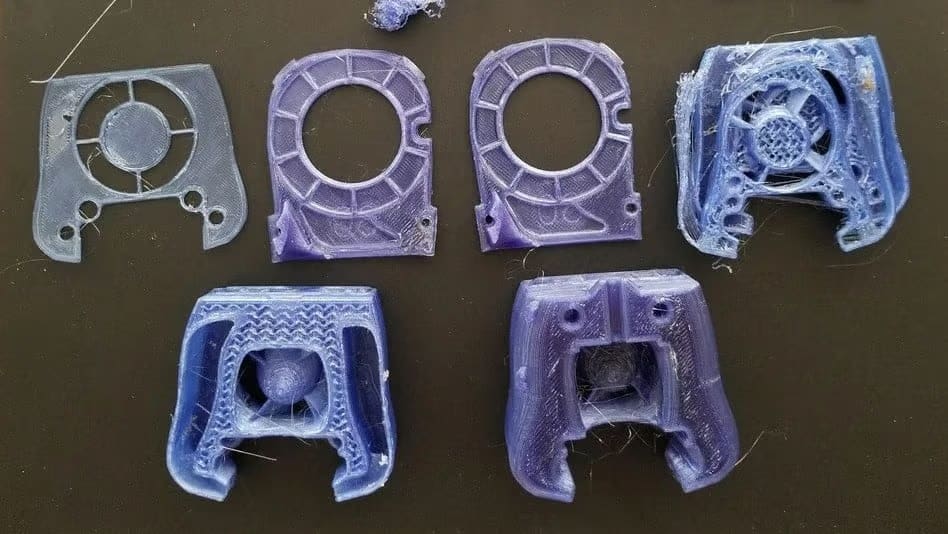
There are quite a few different variations of PC filament out there, some good, others… not so good. We want to ensure that you can make an informed purchase from a brand that you can trust when shopping for PC filament. We have three major criteria points that every entry on this list must follow:
- Community reviews: We picked brands that the community knows and loves, with recommendations and positive reviews from makers. Each filament has at least a 4-star review rating average from the marketplaces where it’s available, as we only want the best of the best on this list.
- Price: While not quite as expensive as other engineering-grade materials, we want to make sure that there is variety in terms of budget on this list. We have options for those looking for inexpensive ways to experiment with PC filament, as well as more extravagant choices to explore.
- Availability: You can expect the filaments on this list to regularly remain stocked so that you can pick up your favorite whenever you need it. We have a range of brands that ship to different areas around the world, so you shouldn’t have too much trouble finding an option that suits your location.
With our considerations out of the way, let’s get to the filaments. Below, you will find our list of the best PC filament options around!
Polymaker PolyMax
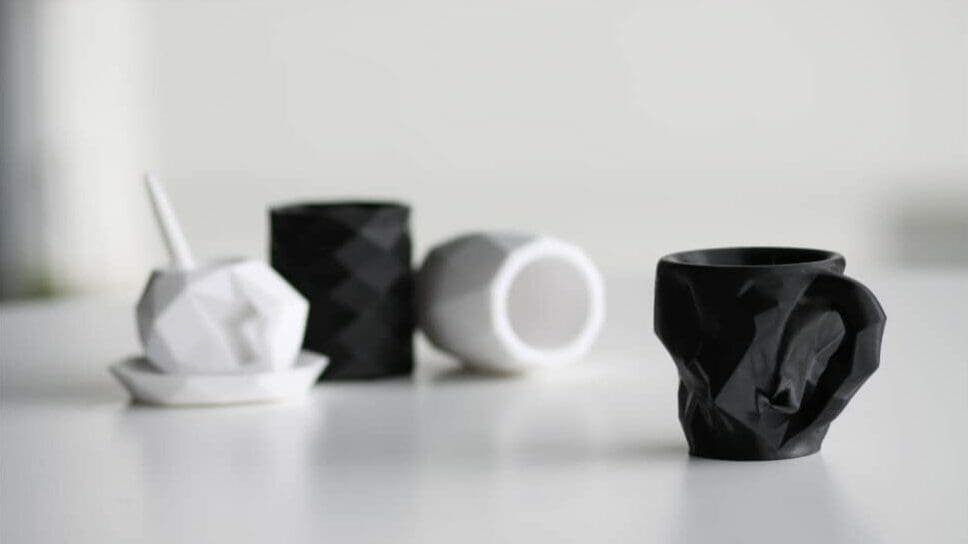
Polymaker’s PolyMax PC (formerly known as PC-Max) is the toughest PC material the company offers. Tuned for smooth extrusion and warp resistance, PolyMax PC offers high performance without compromising on printability (as far as PC goes, at least). Durability is exceptional, with drastically improved impact resistance compared to other PC filaments. Its strength is also fit for the most demanding of applications, as demonstrated by Polymaker lifting over 800 kg with a PolyMax PC hook.
Available in a handful of color variants, PolyMax PC stands out from the crowd for its toughness and printability.
- Nozzle temperature: 250-270 °C
- Bed temperature: 90-105 °C
- Diameters: 1.75 mm, 2.85 mm
- Price per kg: ~$53 (~$40 for 0.75 kg)
- Colors: Black, white, gray, blue, red
Prusament
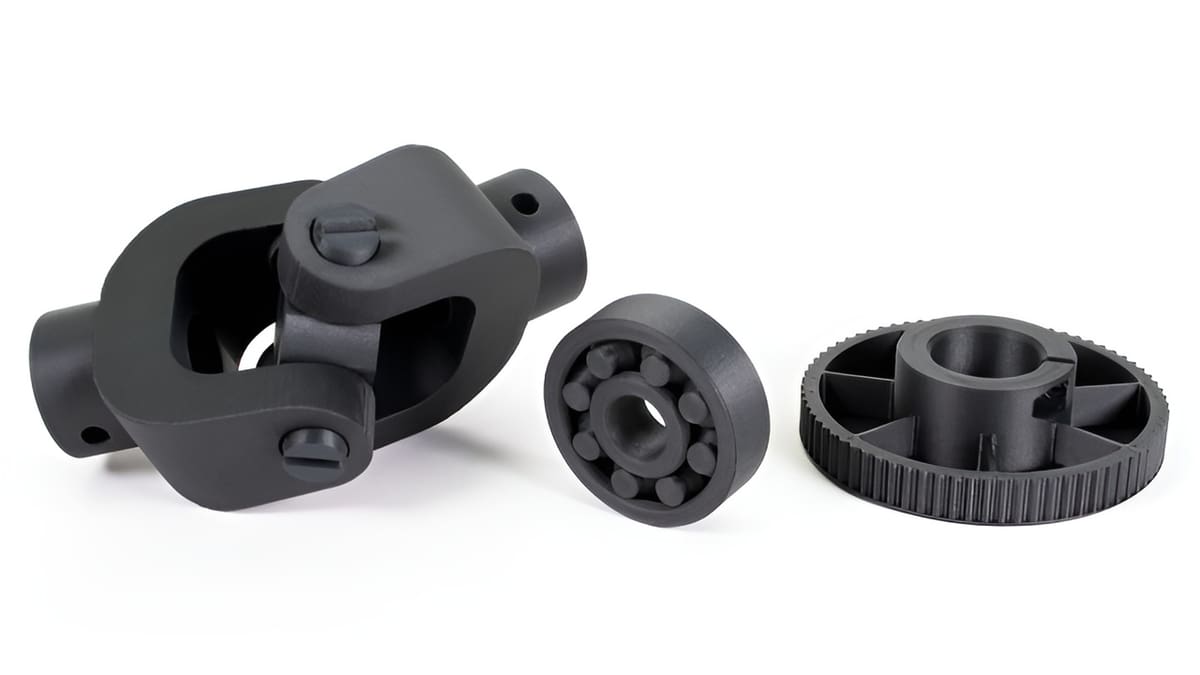
Coming from the same manufacturing line as the beloved printers, Prusament PC is a high-quality blend with stringent tolerances. Being a Prusa filament, it’s subjected to all the usual quality controls: you can even check your spool’s evenness online. Furthermore, when it comes to printing, there are pre-made profiles in PrusaSlicer to facilitate the tuning process.
In terms of properties, it offers good temperature resistance for its price range, topping out at 113 °C. A carbon fiber option is available for increased strength.
- Nozzle temperature: 265-275 °C
- Bed temperature: 110-120 °C (some users have had to go as high as 140 °C)
- Diameters: 1.75 mm
- Price per kg: ~$52 (~$50 for 0.97 kg)
- Color: Natural, black, orange, gray, green
Bambu Lab
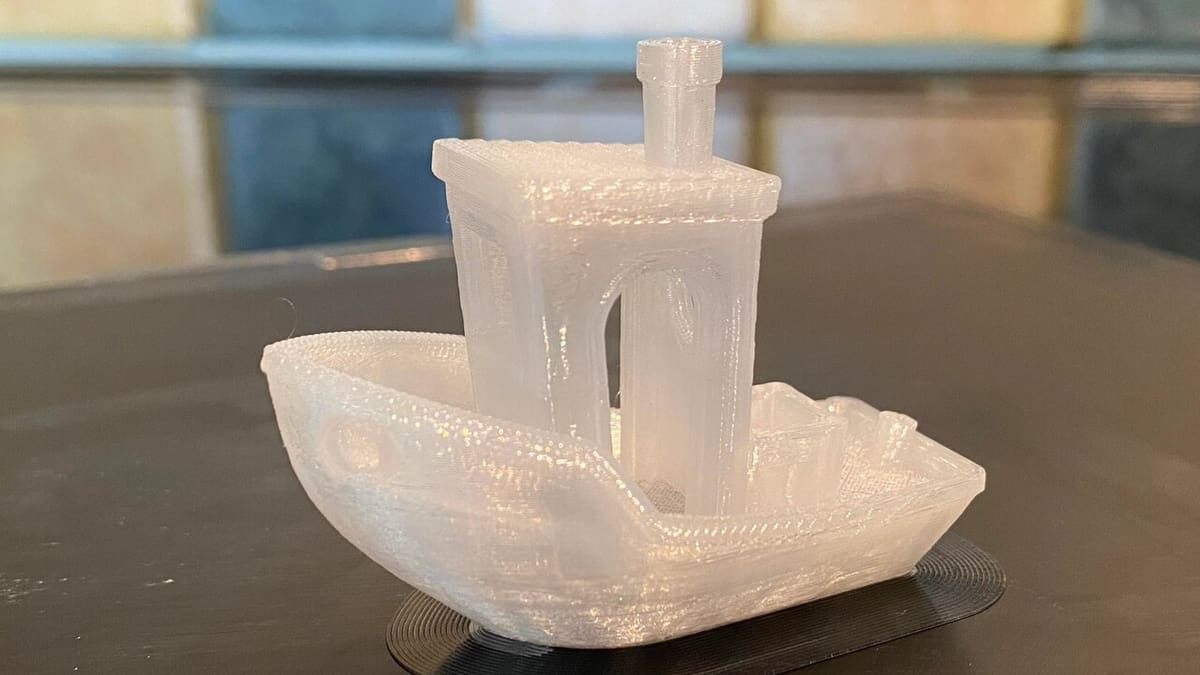
Bambu Lab was one of the first to release high-speed 3D printers, like the X1 Carbon, that are capable of taking advantage of more exotic engineering-grade materials such as carbon fiber, nylon, and polycarbonate. It is only natural that they should release their own line of filament curated for their printers, including Bambu Lab PC.
This blend offers enhanced thermal properties, with a heat deflection of 117 °C and a melting point of 228 °C, and is compatible with Bambu Lab’s AMS unit. Color options are limited to black and white, with the choice of either an opaque or transparent finish. You will also receive one of Bambu Lab’s High-Temperature Reusable Spools, which can reduce waste when ordering refill filament.
- Nozzle temperature: 250-270 °C
- Bed temperature: ~110 °C
- Diameters: 1.75 mm
- Price per kg: ~$40
- Colors: Black, white, clear black, transparent
3DXTech CarbonX
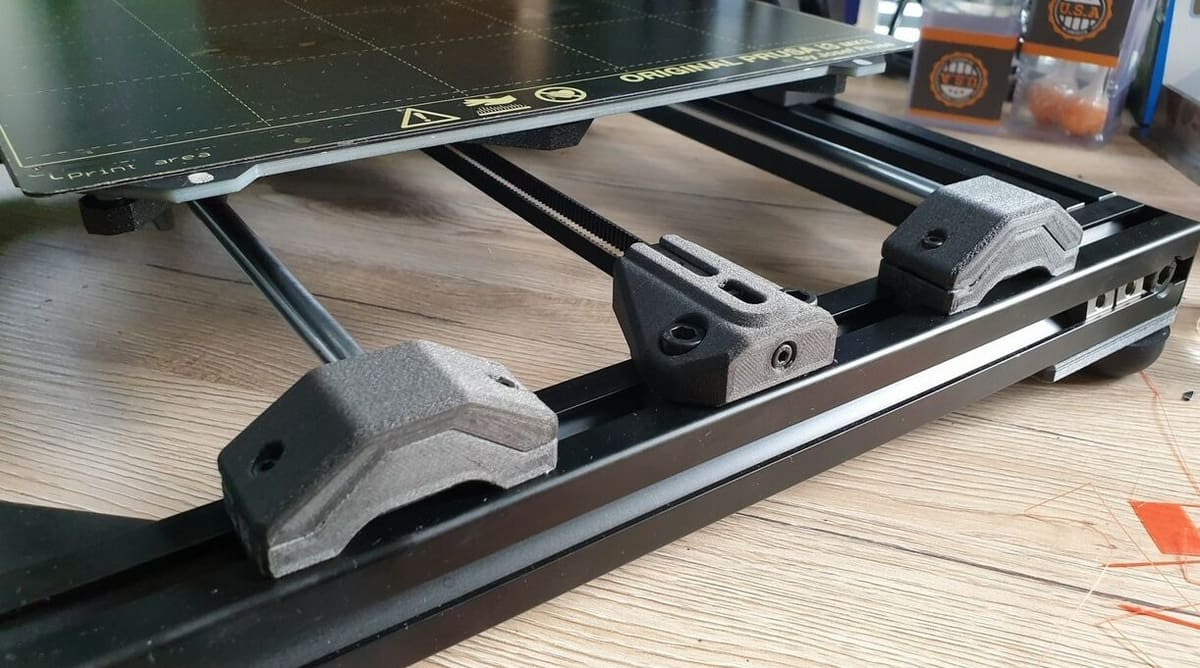
With CarbonX PC+CF, 3DXTech has achieved the same extreme heat resistance as the 3DXMAX, but now with carbon fiber. By incorporating carbon fiber, CarbonX takes PC’s already incredible mechanical properties and increases its stiffness, which is desirable in many applications.
This high-temperature, high-stiffness material is only available in black. Just note that carbon fiber is abrasive, so you’ll want a hardened nozzle to print with.
- Nozzle temperature: 280-310 °C
- Bed temperature: 110-120 °C (some users have had to go as high as 140 °C)
- Diameters: 1.75 mm, 2.85 mm
- Price per kg: ~$120 (~$90 for 0.75 kg)
- Color: Black
Raise3D

Raise3D is a developer of professional-grade 3D printers, like the Raise3D E2 and Pro 2 Plus, and also makes their own line of filament. Available in three colors, Raise3D’s Premium PC filament is a high-quality polycarbonate option that boasts high strength and impact resistance.
According to the manufacturer, this filament is also heat resistant up to 110 °C and flame retardant. Due to its industrial properties, Raise3D recommends using this PC material for industrial applications, end-use parts, and electronic cases.
- Nozzle temperature: 250-270 °C
- Bed temperature: 90-110 °C
- Diameters: 1.75 mm
- Price per kg: ~$50
- Colors: Black, white, transparent
Polymaker PolyLite
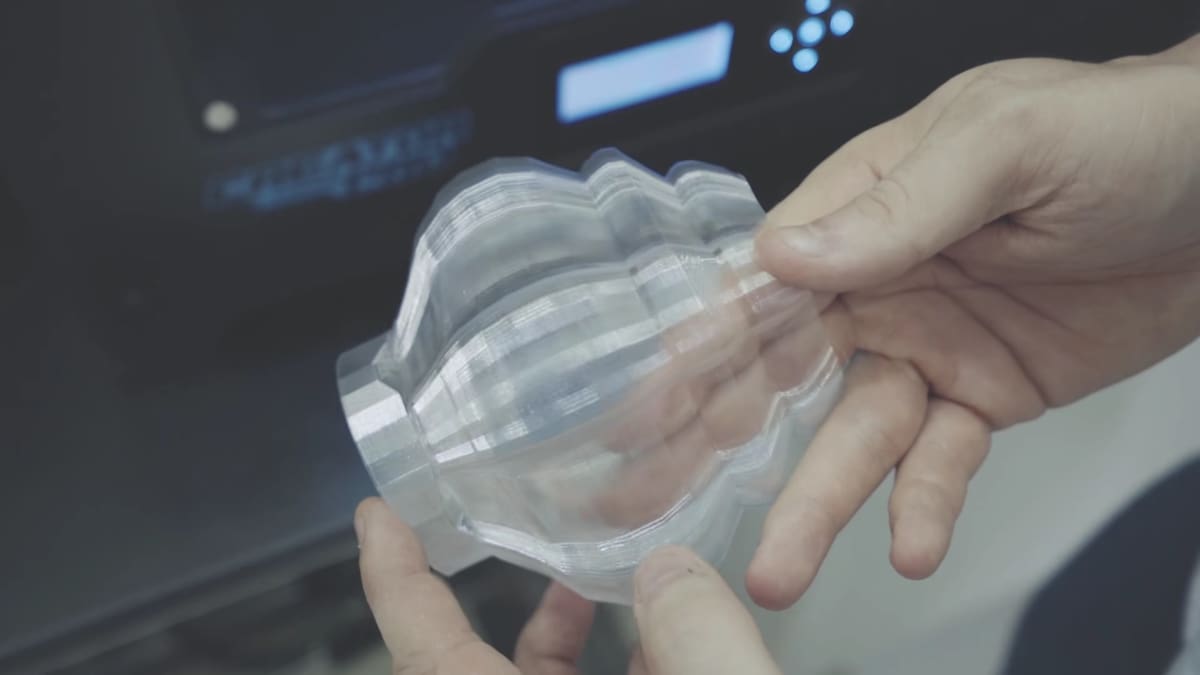
PolyLite PC (formerly known as PC-Plus) is another PC offering from Polymaker. Compared to PolyMax PC, it’s stiffer and stronger, but not as durable due to its lower impact resistance. For what it loses in toughness, however, PolyLite PC makes up for with its relatively low price tag of ∼$30 per spool.
PolyLite PC only comes in a transparent variant, but unless your application specifically requires toughness, it’s a well-rounded and inexpensive filament, making it perfect for those looking to try PC on a budget.
- Nozzle temperature: 250-270 °C
- Bed temperature: 90-105 °C
- Diameters: 1.75 mm, 2.85 mm
- Price per kg: ~$30
- Color: Transparent
Priline
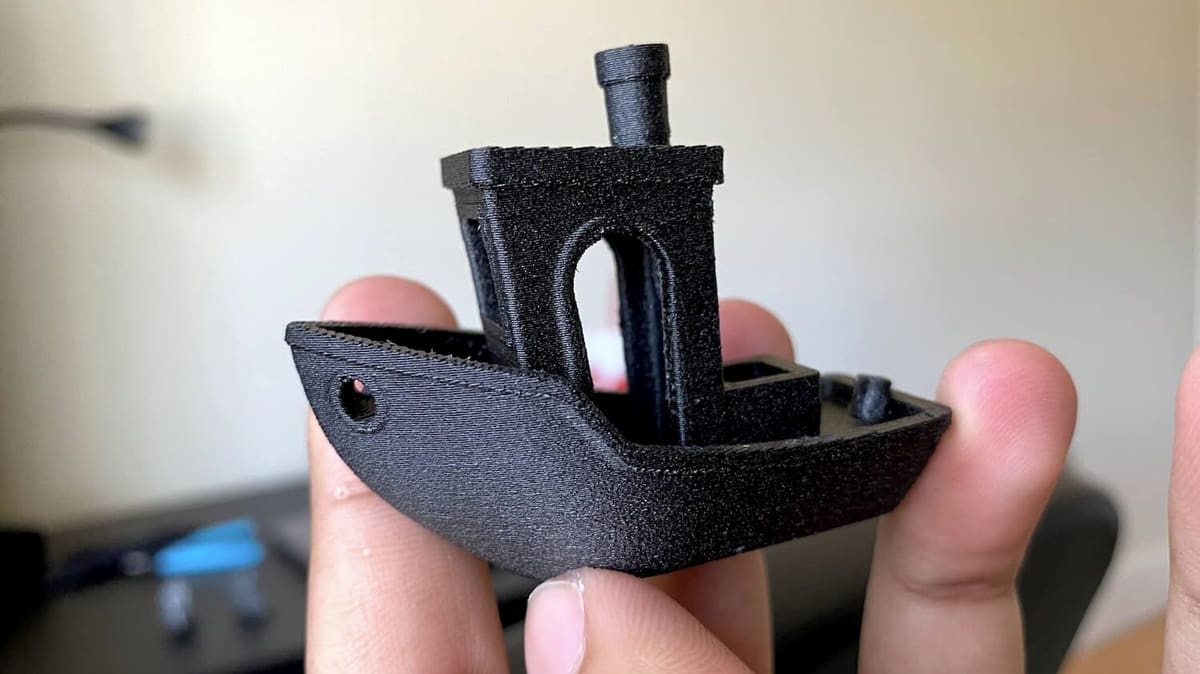
Priline’s PC filament is another great option that offers a lot of strength at an affordable cost. Similar to 3DXTech CarbonX, Priline’s filament is a blend of PC and carbon fiber, meaning it was made from a mixture containing both PC and carbon fiber polymer grinds.
According to the manufacturer, this filament has an impressive diameter tolerance of just ±0.03 mm and doesn’t warp or crack, meaning it should be easier to print. Customers have noted that this filament can yield great results, but tuning your slicer profile for this material is very important. Lastly, while it only comes in black, Priline offers both 1-kg and 2.5-kg spools, although the larger spool might be hard to track down.
- Nozzle temperature: 240-260 °C
- Bed temperature: 80-100 °C
- Diameters: 1.75 mm
- Price per kg: ~$50
- Color: Black
UltiMaker
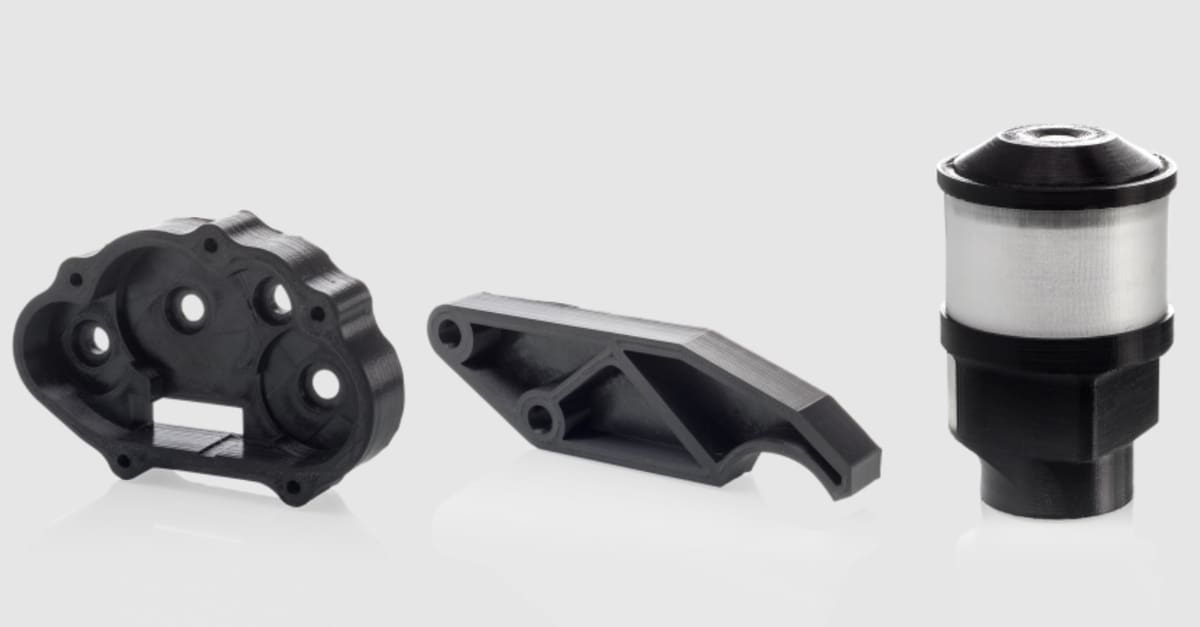
UltiMaker is usually known for high-performance printers, but their filament is no less praiseworthy. With improved interlayer adhesion and well-tuned material profiles, UltiMaker PC is an exceptional, easy-to-print choice.
Being part of the UltiMaker ecosystem also brings additional benefits: UltiMaker 3, S3, and S5 users will benefit from the included NFC tag that encodes all of its print settings, streamlining operation. Additionally, for those with the S5 Pro Bundle, the built-in filament storage system keeps your PC fresh and dry at all times.
Available in 2.85 mm black, white, and transparent variants, UltiMaker PC should provide good printability and smooth integration.
- Nozzle temperature: 260-280 °C
- Bed temperature: ~110 °C
- Diameters: 2.85 mm
- Price per kg: ~$107 (~$80 for 0.75 kg)
- Colors: Black, white, transparent
3DXTech 3DXMax
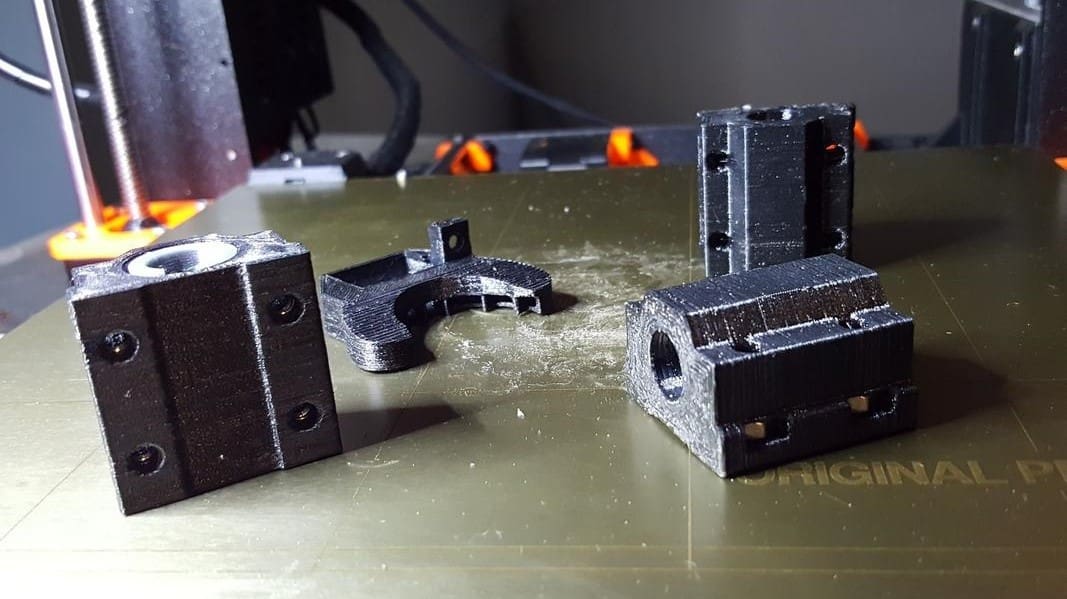
PC’s heat resistance is already quite impressive, but what if you need more? Enter 3DXTech’s 3DXMax PC. This well-rounded PC filament features an eye-popping glass transition temperature of 147 °C for the most demanding applications. Just note that such a high heat resistance calls for equally high printing temperatures, making an enclosure highly recommended (although you can still print without one).
3DXTech also offers another version of this filament, known as 3DXStat, that’s safe from electrostatic discharge (ESD). This means that parts won’t pass on any discharged electricity, so it’s useful for prints that touch or interact with electronics, such as hard drive cases or motherboard covers. Besides ESD safety, 3DXStat is very similar to 3DXMax in price and printing temperatures.
- Nozzle temperature: 280-310 °C
- Bed temperature: 110-120 °C
- Diameters: 1.75 mm, 2.85 mm
- Price per kg: ~$90 (~$45 for 0.5 kg)
- Colors: Black, white
Filoalfa
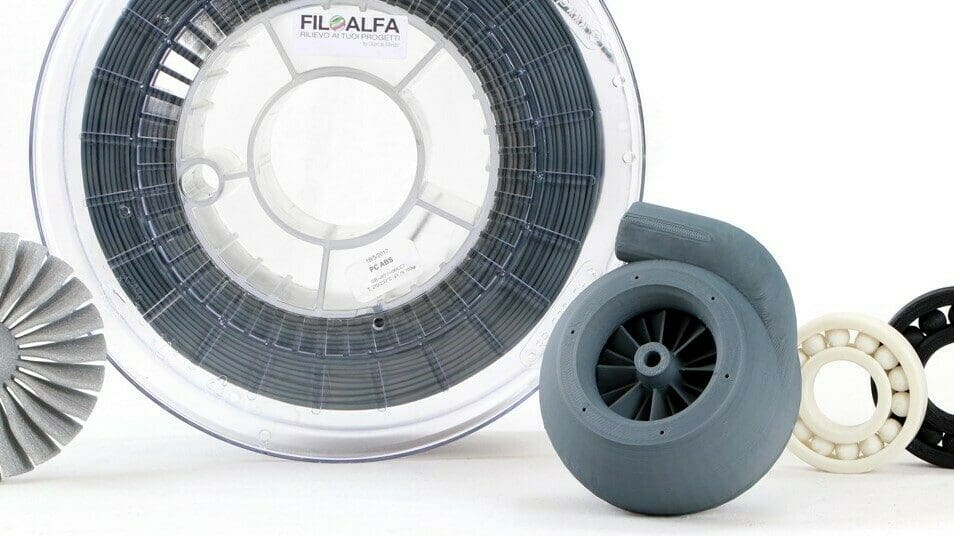
Like other PC/ABS entries on the list, Filoalfa’s PC/ABS aims at mixing the best of two worlds. The blend further improves the mechanical properties of ABS, while being easier to print and warping minimally. The great resistance to friction is also another great property that has been inherited, making this great for high-wear applications.
- Nozzle temperature: 240-260 °C
- Bed temperature: 80-100 °C
- Diameters: 1.75 mm, 2.85 mm
- Price per kg: ~$40
- Color: Black, white, neutral, with additional options available in other spool sizes
Additional Options
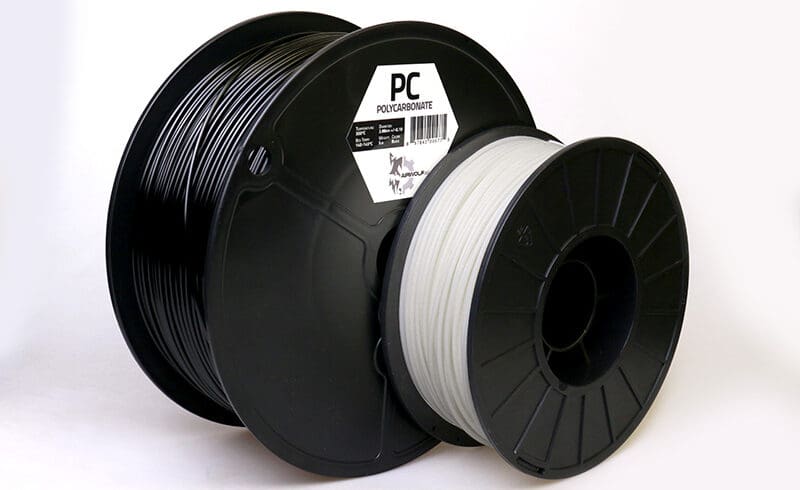
If you don’t think any of the above products are for you, next up are a few additional options that are a little more professionally focused:
- Airwolf: This PC filament is on the higher end of PC options regarding price. However, according to the manufacturer, it’s great for printing automobile and electrical components. Unfortunately, you’re going to need a pretty powerful printer to use this material as it requires nozzle and bed temperatures of 300 °C and 140-145 °C, respectively.
- Lexan: EXL filament from Lexan is a PC material that’s heavily tested and proven to be a high-strength option. According to the manufacturer, the material is meant for more professional applications rather than consumer use, and it also has lower temperature requirements.
- Ultrafuse: As the name suggests, this PC/ABS filament from BASF Ultrafuse is another blend of PC and ABS polymers, with similar temperature requirements to most PC materials. Like Lexan’s EXL filament, Ultrafuse’s PC/ABS filament has been tested for strength and has excellent layer-to-layer adhesion.
- Stratasys: From one of the leading companies in the 3D printing industry, Stratasys’ PC filament is a great option for those looking to make robust prototypes and tooling equipment (e.g. jigs, manufacturing aids). Based on their tests, this filament is extremely strong, with a high tensile yield strength of 60 MPa, about 20% stronger than Stratasys’ Nylon 12 filament.
- Intamsys: Lastly, as a manufacturer of engineering-grade filaments, the PC filament from Intamsys can be used to make a wide variety of durable parts, like medical device components and other fixtures. The manufacturer also points out that their PC filament is very resistant to temperature (up to 110 °C) and impact resistant.
License: The text of "The Best Polycarbonate (PC) Filaments" by All3DP is licensed under a Creative Commons Attribution 4.0 International License.
CERTAIN CONTENT THAT APPEARS ON THIS SITE COMES FROM AMAZON. THIS CONTENT IS PROVIDED ‘AS IS’ AND IS SUBJECT TO CHANGE OR REMOVAL AT ANY TIME.


